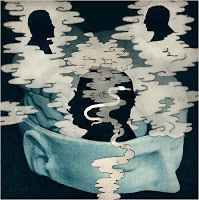 I met a pleasure based psychotherapist recently. When Janov’s Primal Therapy came along I seem to recall that he said that a therapist was a dealer in pain. So is therapy about pleasure or pain and trauma?
I met a pleasure based psychotherapist recently. When Janov’s Primal Therapy came along I seem to recall that he said that a therapist was a dealer in pain. So is therapy about pleasure or pain and trauma?
Nobody would go to a therapist to talk about how happy they were or what a great childhood they had; but it is one of the more interesting questions in therapy the extent to which we have to go in to past pain and trauma to clear it out. In our culture we have the “no pain, no gain” school of development. A deeply Puritan culture like the British is very suspicious of happiness. I can lead straight in to the arms of The Devil. In most therapies, both humanistic and analytic happiness could well be covering something up; even a manic defence against deep sadness. Of course this can be true but it is also true that many defences, particularly somatic ones, tend to block access to all deep emotions; pain as well as joy. This is simply because all strong emotions and body sensations are close together in their emotional anatomy and neurology. On a fairground roller-coaster the riders play with the edge between fear and excitement; screaming with fear as the car descends and then cuing up for another go! A father playing with a young child may throw them up in the air and catch them giving squeals of joy, excitement, fear overcome by return to safety. Deep sobbing and deep belly laughter are quite similar to observe from the outside. In the intense autonomic activation of orgasm, pleasure and crying can come together. Those in to BDSM are experts on the edge between pleasure and pain and how both can lead to altered states of consciousness.
 Many therapies are very interested in trauma; particularly if that term is extended from single incident events such as an accident, or act of abuse or death of someone to include developmental trauma such as having a depressed mother when there would be many occasions when the required empathic attunement and care-giving weren’t there. In the past going into the pain was seen as the only way. Now with modern energy psychology methods such as AIT(www.aitherapy.org) that I practice this is known not to be necessary. Just naming the trauma and finding the location in the body is often enough to clear it.
Many therapies are very interested in trauma; particularly if that term is extended from single incident events such as an accident, or act of abuse or death of someone to include developmental trauma such as having a depressed mother when there would be many occasions when the required empathic attunement and care-giving weren’t there. In the past going into the pain was seen as the only way. Now with modern energy psychology methods such as AIT(www.aitherapy.org) that I practice this is known not to be necessary. Just naming the trauma and finding the location in the body is often enough to clear it.
So as we block pleasure and pain, when a client comes in for a session reporting that they feel good. Unless I am very suspicious of this, I will only want to move feeling good to feeling fantastic. There has been more attention recently to positive psychology and to the concept of Flow, (from Mihaly Csikszentmihalyi); a state of being where we are not divided and distracted but fully engaged in life at that moment.
So while I will try as a therapist to stay fairly divided in my attention between pain and pleasure. I have a growing sense that working with pleasure and how to expand it and deepen it within our bodies and our neurology is a powerful way forward. This forms a large part of my book Tantric Psychotherapy that I am working on at the moment (see www.tantricpsychotherapy.com )
Martin is London based psychotherapist
READ More from Martin HERE
BIO:
I have worked for nearly 30 years a psychotherapist and counsellor and supervisor. In private practice and in training courses, for a university and now for the police.